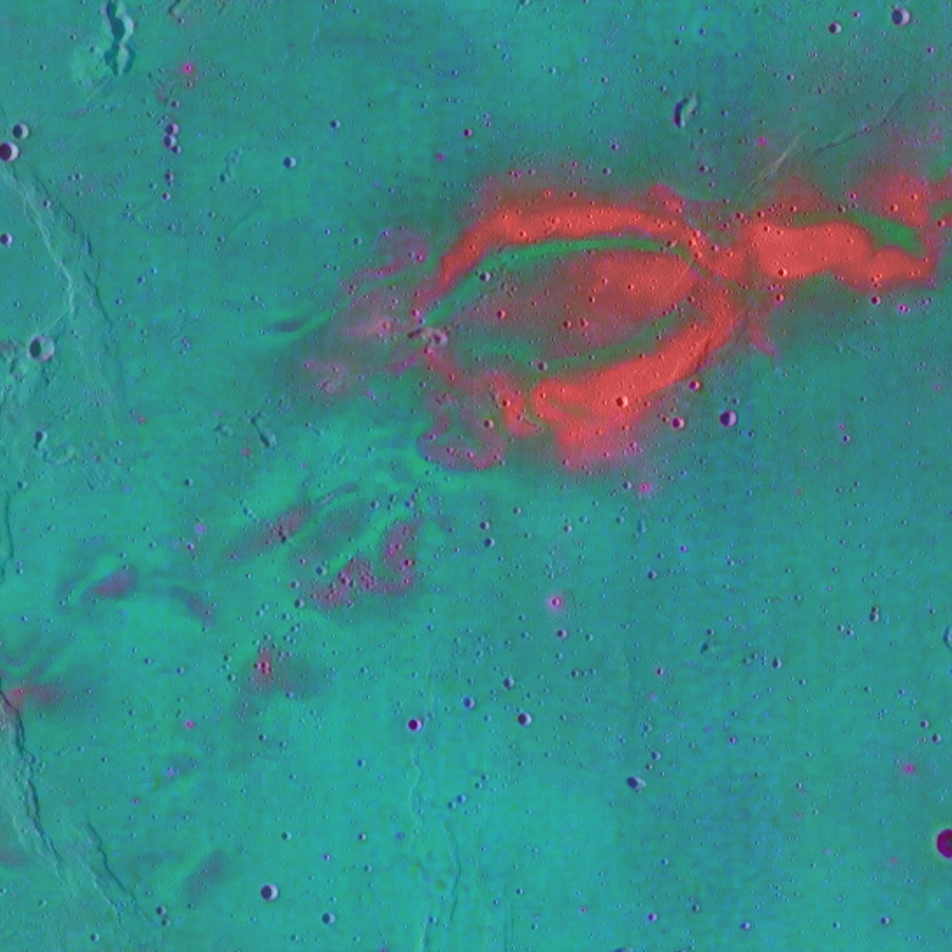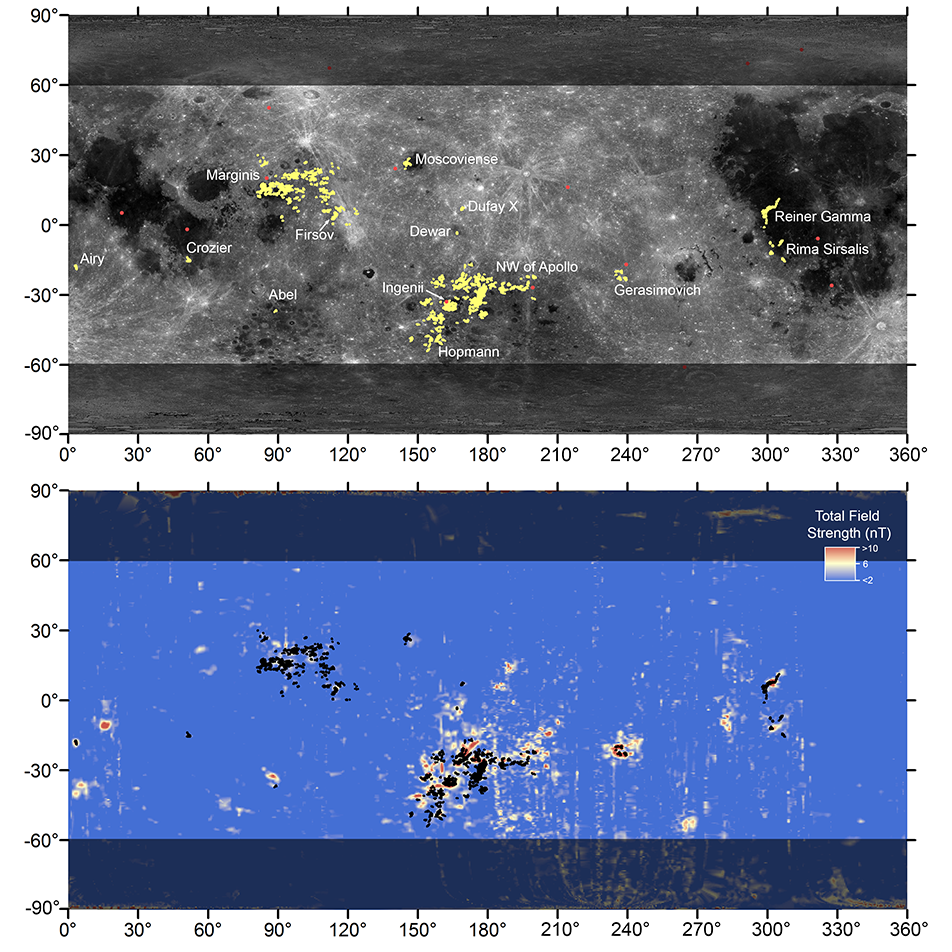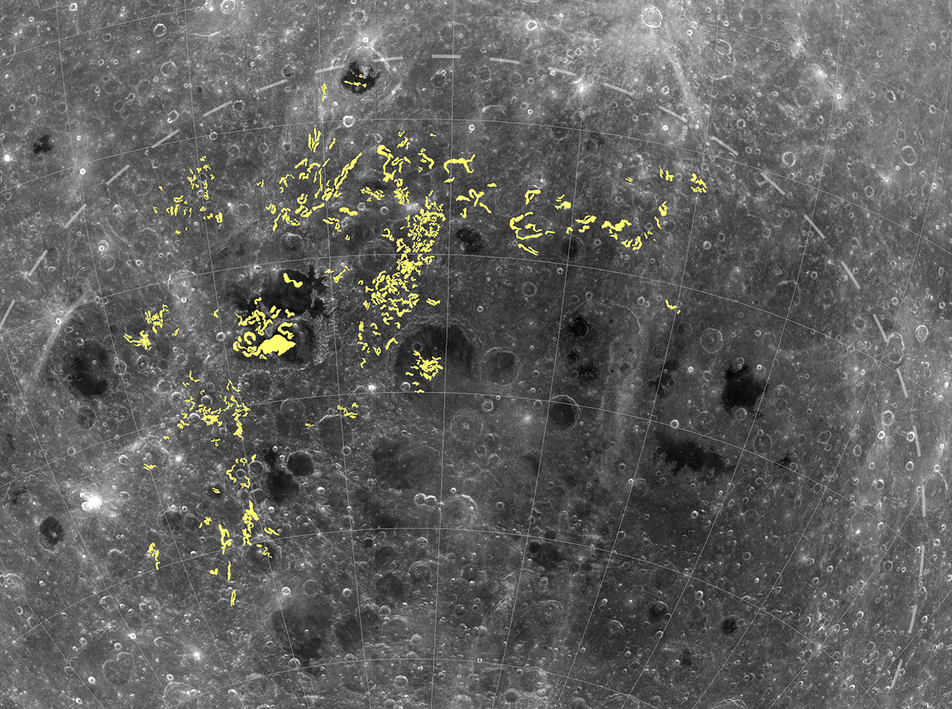
The beautiful features seen above, which go by the highly scientific name of "swirls," are unique to the Moon and one of its great puzzles. How did these bright, sinuous, surficial (and magnificent) deposits form?
Apollo-era workers speculated that swirls could have formed as volcanic ash deposits or through chemical alteration of the surface by volcanic gases. Later work showed that swirls are not composed of material that is distinct in composition, in fact they are the same composition as surrounding darker material, but instead may be bright because they appear to be "fresher" than their surroundings. Freshly exposed material has not been subjected to the harsh lunar surface environment where charged particles from the solar wind and micrometeoroids work to slowly darken the soil and alter the way it absorbs and reflects light at different wavelengths. Several ideas have been proposed for why the swirls are "fresh" and have their distinctive shapes - including that they formed when a recent comet scoured the surface, or that they are shielded from the solar wind by local magnetic anomalies whose field lines form complex shapes.
Interestingly, though swirls have been the subject of many studies, a comprehensive assessment of their distribution across the Moon had not been performed, until the recent publication of work from the LROC team. Using data from the Wide Angle Camera, the team noted that swirls typically absorb ultraviolet light more strongly than their surroundings (as is typical of fresh material). Because the LROC Wide Angle Camera provides the first global ultraviolet–visible observations of the Moon (wavelengths from 321 to 689 nm), the distribution of swirls could be mapped based on their ultraviolet properties, as highlighted in the image above, even in the lunar highlands where swirls can be harder to detect against the bright background in visible images.

The resulting map, shown above, confirmed that swirls are all associated with crustal magnetic anomalies (though not all magnetic anomalies have swirls). It also revealed previously unmapped swirls in several areas, including some swirls within the South Pole–Aitken basin. Rather than existing as several discrete geographic groupings, swirls stretch nearly continuously across the northwest portion of the Moon's largest impact basin, and include the famous swirls of Mare Ingenii.

The LROC map allowed for a new look at the overall characteristics of swirls, and how they vary from location to location. Swirls are found at all elevations, but appear to be rare in areas of the Moon with extremely low iron content. The results of this new study are generally consistent with the idea that local magnetic anomalies shield portions of the surface, protecting the areas within swirls from the solar wind and thus causing them to remain bright and retain their distinct ultraviolet surface properties that would otherwise be weathered away if not for the magnetic field. However, without new data, such as magnetic measurements at the spatial scale of the swirls (<5 km pixels), or surface measurements of solar wind characteristics and local soil chemical and physical properties, we will never have a complete understanding of swirl formation. These amazing features lie at a cross-section of many branches of planetary science, and will help us to understand the nature of lunar magnetism, the rates and relative importance of space weathering processes, and the evolution of the lunar surface.
The full story on lunar swirls can be found in a new Lunar Reconnaissance Orbiter special issue of Icarus:
The Distribution and Extent of Lunar Swirls. Denevi, B. W., M. S. Robinson, A. K. Boyd, D. T. Blewett, and R. L. Klima (2016). Icarus, 273, 53–67, doi:10.1016/j.icarus.2016.01.017.
Related featured images:
LROC NAC Anaglyph: Mare Ingenii Swirls
Looking East Over Reiner Gamma
Reiner Gamma Constellation Region of Interest
Published by Brett Denevi on 3 May 2016